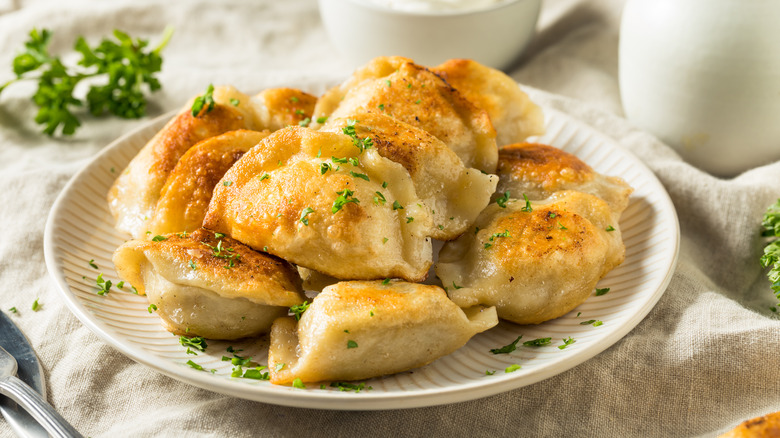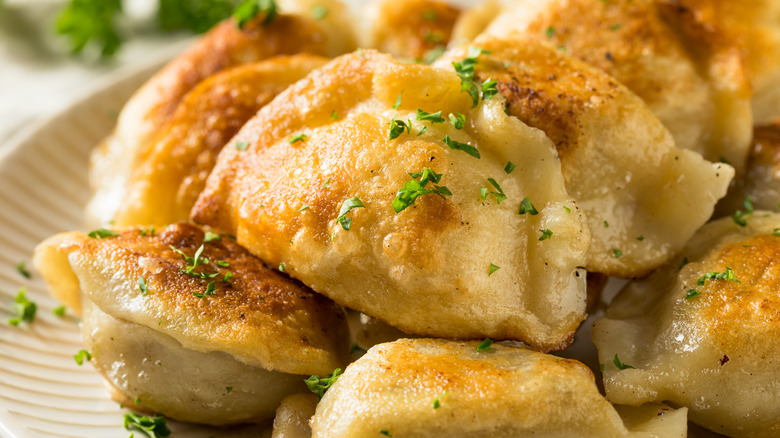68% Of Pierogis In The US Are Consumed In The 'Pierogi Pocket' Region
If you're seeking out the ultimate comfort food, the pierogi just might be it. A typical pierogi is a dumpling made from dough that can be filled with mashed potato, cheese, sauerkraut, meat, fruit, or other fillings (via The Pierogi Experiment). Per Upstate Pierogi Co., the pierogi is "most often associated with the cuisine of Central and Eastern European nations."
The unleavened dough starts off as a flat circle, and once the filling is placed in the center, the dough is folded over and the edges are crimped (there are even specific tools you can buy to speed up this process). Once sealed, the pierogi are usually boiled and either eaten as-is or pan-fried in oil or butter to golden-brown perfection. After being cooked, they are often served alongside fried onions and sour cream.
While pierogi are enjoyed by people all over the world, there is one specific part of the United States where people tend to eat pierogi more than anywhere else. In fact, this region has even been dubbed "the pierogi pocket" due to the amount of pierogi consumed each year.
One region eats more pierogis than the rest of the country
The "Pierogi Pocket" region encompasses five midwestern states: Ohio, Indiana, Pennsylvania, New York, and New Jersey. A few cities — including Chicago and Detroit — are also included in this area, according to The Pierogi Experiment. This "pocket" is apparently responsible for a whopping 68% of the annual United States pierogi consumption. And, according to Cleveland.com, Americans really like pierogi, and roughly 31 million of these paunchy dough pouches are consumed each year. The food even has its own holiday: National Pierogi Day is celebrated on October 8.
Eastern European immigrants brought pierogi to the United States in the early 1900s, as per The Pierogi Experiment. The first pierogi sales took place in Cleveland in 1928, and the food became an unofficial icon for church fundraisers after World War II. With the introduction of Mrs. T's frozen pierogi by the 1960s, the stuffed dumplings became easily accessible in grocery stores across the United States and Canada.
Pierogis are enjoyed for the holidays
Although many cultures claim to have invented pierogi, and its origins are disputed (as is often the case with popular foods), pierogi are an essential part of Polish culture. Pierogi-like foods have been enjoyed in Poland since the 1200s, and Polish cookbooks featured recipes as early as the late 17th century.
Pierogi are especially popular around the holidays, according to The Pierogi Experiment. Vegan pierogi was typically enjoyed on Christmas Eve thanks to the Roman Catholic Church's fasting mandates. That tradition evolved, and Polish Catholics often celebrate Christmas Eve with a meatless meal, called Wigilia, or "The Vigil." Pierogi are a central part of this meal, and the most popular fillings include plain potato or sauerkraut, enjoyed alongside borscht soup.
Whether you enjoy pierogi around the holidays, you're celebrating National Pierogi Day, or you're just cooking some up to enjoy a delicious comfort meal, pierogi are a hearty, delicious addition to any dinner plate.


